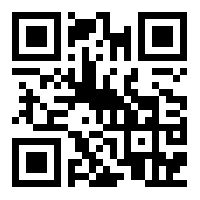High Cholesterol Signs & Symptoms
WHAT IS HIGH CHOLESTEROL?
High Cholesterol in blood is also known as Hyperlipoproteinemia. It is the elevation of total cholesterol and low-density lipoprotein (LDL Cholesterol)/ triglycerides/non-high-density lipopro-tein (HDL) cholesterol in the blood. Hyperlipoproteinemia may be characterized by isolated in-creased cholesterol levels (hypercholesterolemia) or isolated increased triglyceride levels (hyper-triglyceridemia) or both.
WHAT ARE THE CAUSES?
High cholesterol levels can be traced to two types:
- Sporadic - Occurring with no family history due to factors like obesity, diet, lack of exercise and stress. Several other conditions like diabetes, alcohol use, hypothyroidism, medications like glu-cocorticoids, diuretics, beta blockers, retinoic acid contribute to high cholesterol levels.
- Familial - Inherited type occurring due to genetic defect. This occurs in about 1 in 500 people.
WHAT ARE THE SIGNS, SYMPTOMS AND COMPLICATIONS?
Long standing elevation of serum cholesterol levels can lead to narrowing of blood vessels (atherosclerosis), which leads to decreased blood supply to the organ supplied by that blood vessels. In the long run, it may lead to the formation of atheromatous plaques that obstruct blood flow to the organs supplied by the arteries. The tissues and organs slowly diminish and this aspect manifests as specific symptoms. For instance, temporary restriction of blood supply to the brain manifests as temporary loss of vision, dizziness and impairment of balance, difficulty in speaking, weakness or numbness and tingling sensation. Insufficient blood supply to the heart may lead to chest pain, shortness of breath. Insufficient blood supply to the legs may manifest as calf pain while walking, while in the intestines may present as abdominal pain after eating a meal.
A sudden blockage of a coronary artery may result in heart attack, blockage of arteries supplying the brain can cause stroke manifesting as paralysis. If prompt intervention is not done, it can be fatal.
Familial hypercholesterolemia may be associated with yellowish patches underneath the skin around the eyelids, white or gray discoloration of peripheral cornea and yellowish deposits in tendons.
To know more about cholesterol and its effects consult a gp today.
HOW TO MANAGE AND TREAT IT?
Life style modifications - These include smoking cessation, limiting alcohol consumption, in-creasing physical activity and maintaining a healthy weight. Obese individuals can lower blood cholesterol by losing weight, a kilogram of weight loss can reduce cholesterol by 0.8mg/dl.
Diet - Eating a balanced diet with a high proportion of vegetables, fruits, dietary fibre and low in fats results in a modest decrease in total cholesterol.
Medications - Statins are the mainstay of treatment apart from that fibrates, nicotinic acid and cholestyramine are recommended for treatment.
Looking for a Doctor Advice?
Download the DocOnline App
- Live Chat with Doctors
- Book Doctor Appointment Online
- Speak to a Doctor within 15 Minutes
- Consult doctors via Audio/Phone Call & Video
- For You + 3 Family Members
- Store health records
- Read health tips
- Order Medicines Online & Get Lab Tests Done Easily




